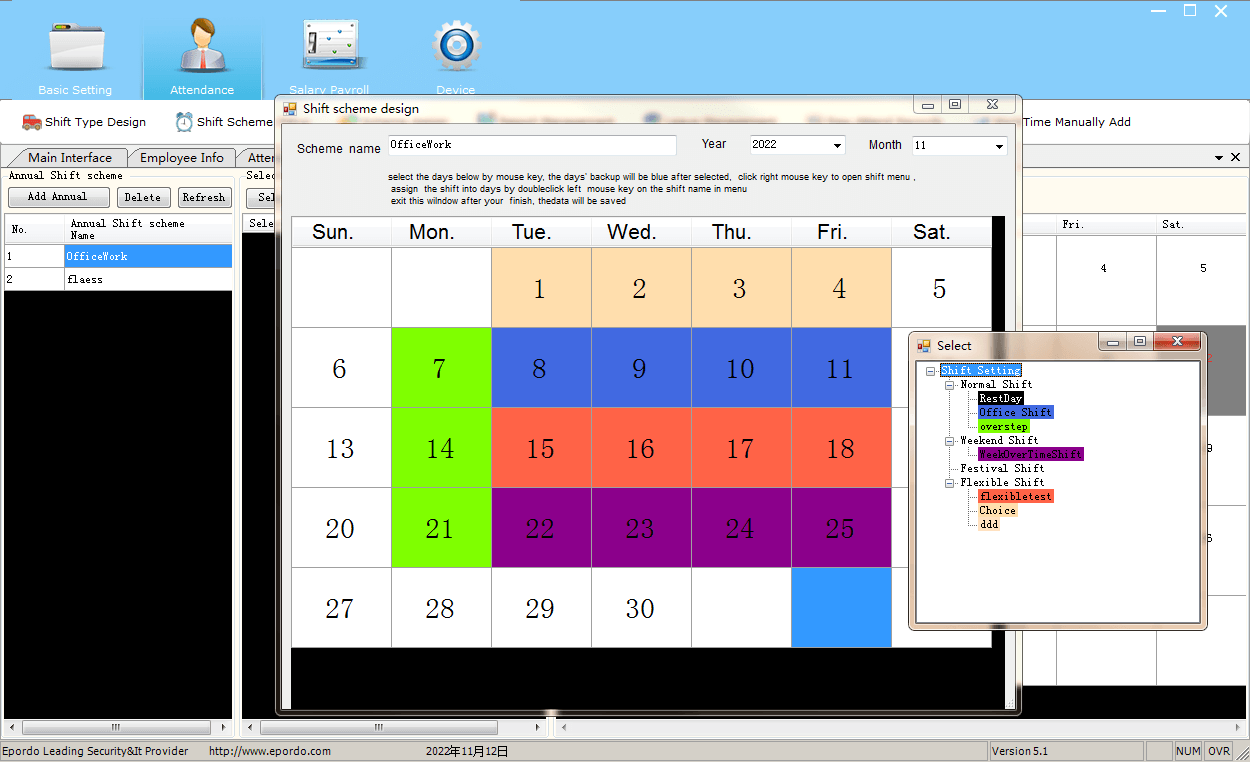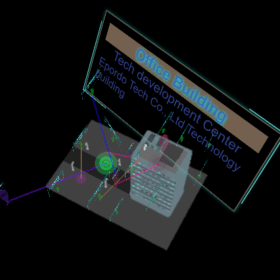Time Attendance Software with shift Date Plan, calendar with different shift is very clear work plan, also this work shift date plan is very easy to change and design. you make any date rest day, work day, or weekend day, it is best flexible shift work plan for any complex case.

Colorful shift calendar is easy to read and understand.
What is shift planning?
Shift planning is used in industries that rely on shift work, such as hospitality, health, or service industries. It simply means that you are scheduling out your employees to cover the work that needs to be done.
Business owners or managers are usually the ones who take care of shift planning. Over time, shift planning has moved from handwritten paper schedules to spreadsheets to automated apps that make the process easier and more fluid.
That’s the overview, of course.
What it comes down to, though, is that there are a lot of moving parts. You have to balance employee time off, overtime, vacation requests, and customer demand. Ideally, shift planning means you have a system that integrates all of these concerns by caring about the individual employee as well managing what each shift requires.
Whether you’re using a spreadsheet or an app, shift planning should be more than filling in a chart and plugging open shifts with random employees. It’s about matching employees with shifts in a way that’s ideal for everyone involved.
There are a lot of tools and techniques you can use to make your business more competitive, but getting your shift planning right is the most basic and effective.
Benefits of shift planning
As mentioned, shift planning is more than sticking names on a chart. It’s planning, not indifference. There’s a method to the madness, and that method means shift planning has benefits when it’s done right.
Control labor costs
Poorly-planned shifts lead to two costly errors: understaffing and overstaffing.
If a shift doesn’t have enough workers, you’ll end up with overtime expenses as well as customer dissatisfaction. Both of those hit your bottom line. When you manage your labor costs (and deal with overtime issues), you really start to appreciate a well-planned schedule.
On the flip side, loading a shift with too many workers means you’re paying for labor you don’t need.
While you can easily see how under or overstaffing leads to visible problems, it can also contribute to employee turnover or overall dissatisfaction. Working employees too hard, or having too many on a shift so some don’t have to work as much, creates internal problems that fester.
Increased productivity
One of the top benefits of shift planning is increased employee productivity.
Having enough workers, with the right skills to meet customer demand, means you have a productive team. But there’s more to it than that.
Workers who want to work the shifts they’ve been assigned (or chosen, as we’ll discuss in a bit) are more productive. They feel like they have control over their life, and that you’ve heard their input on what shifts they prefer to work. There’s a feeling of ownership and responsibility when it comes to their work, that their voice matters.
The opposite of this is simply assigning people to shifts without any planning or concern for preference, skills, work-life balance, or other considerations.
Increased flexibility
If you’re using the right shift planning tools, you can inject some flexibility into your business. And that flexibility is a must-have in these increasingly changing and unpredictable times.
As you’ll see, depending on how you choose to plan shifts, you may be able to adjust your shifts quickly based on fluctuating demand.
To view some attendance devices
-
Product on saleCloud-Based Online Fingerprint Time Attendance Access Control SystemOriginal price was: $269.00.$259.00Current price is: $259.00.
-
Product on saleFace&Fingerprint cloud-based time attendance access control systemOriginal price was: $279.00.$269.00Current price is: $269.00.
-
Product on sale7inch Dynamic Face and Fingerprint Cloud Online Time Attendance QR and POE FunctionOriginal price was: $439.00.$399.00Current price is: $399.00.

 Access Control System
Access Control System 3D venue control system
3D venue control system

